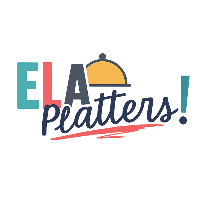Differentiated instruction is all about recognizing that no two students learn exactly the same way. It’s like hosting a party and realizing some guests prefer jazz while others are there for rock ’n’ roll — you can’t play one song and expect everyone to dance! In education, this means adjusting teaching methods, materials, and assessments to cater to different learning styles, interests, and readiness levels.
Why is Differentiation Essential in Today’s Classrooms?
Gone are the days when a one-size-fits-all approach worked (if it ever really did). Today’s classrooms are more diverse than ever — culturally, linguistically, and academically. Differentiation ensures that every student gets what they need to succeed, not just the average learner.
Understanding Literacy Stations
What Are Literacy Stations?
Imagine little pockets of learning around your room, each buzzing with activity. Literacy stations are designated areas where students engage in specific reading, writing, speaking, and listening tasks — independently or in small groups. They are interactive, purposeful, and incredibly effective for hands-on learning.
Common Types of Literacy Stations
-
Reading Station: Dive into leveled books or articles.
-
Writing Station: Practice different writing styles or prompts.
-
Word Work Station: Explore vocabulary and spelling in fun ways.
-
Listening Station: Hear fluent reading through audio books or recordings.
-
Technology Station: Use educational apps to reinforce literacy skills.
The Connection Between Literacy Stations and Differentiated Instruction
How Literacy Stations Facilitate Personalized Learning
By rotating through various stations, students experience multiple ways to engage with literacy. Some may thrive by listening to stories; others might shine while crafting their own tales. Literacy stations offer that personalized buffet where everyone finds something that suits their taste.
Meeting Diverse Learning Needs Through Stations
Whether you have struggling readers, English Language Learners, or gifted students, literacy stations can be tailored. Adjust text complexity, modify tasks, or add language supports to ensure every learner is challenged appropriately without feeling overwhelmed.
Setting Up Effective Literacy Stations
Planning Based on Student Needs
Start by asking yourself: What do my students need most right now? Diagnostics and observations are your best friends here. Knowing where each student stands makes it easier to create meaningful, targeted stations.
Creating Engaging and Inclusive Activities
Think beyond worksheets! Include games, crafts, storytelling, and role-playing. When activities are fun and meaningful, students invest themselves more deeply in the learning.
Organizing Physical Space for Success
Physical layout matters. Stations should be clearly labeled, accessible, and stocked with all necessary materials. Flow matters too — no one wants a classroom traffic jam!
Strategies for Differentiating Within Literacy Stations
Grouping Students Strategically
You can group by skill level, interests, or even mixed-ability groups depending on the activity. Sometimes, a high-level peer model can work wonders for a struggling student.
Offering Choice and Voice
Empower students by letting them choose which station to tackle first, or even offer choices within a station. Choice fosters ownership and motivation.
Scaffolding and Support Mechanisms
Provide graphic organizers, word banks, sentence starters, or visual aids. These supports act like training wheels, eventually helping students ride confidently on their own.
Assessing and Adapting Stations Over Time
Using Formative Assessments Effectively
Quick check-ins, exit tickets, and observation notes help you measure station effectiveness. Regular assessments ensure you’re not just spinning your wheels but actually moving forward.
Student Self-Assessment and Reflection
Teach students to reflect on their station work. Self-assessment boosts metacognitive skills and responsibility — the secret sauce for lifelong learners.
Overcoming Challenges in Literacy Stations
Managing Time and Behavior
Set clear expectations, use visual timers, and practice station rotations until they become second nature. Clear procedures = smooth operations.
Ensuring Equity and Accessibility
Make sure all students, including those with disabilities or English learners, can fully participate. Adapt tasks, provide necessary accommodations, and monitor engagement closely.
Best Practices for Successful Literacy Stations
Real-Life Examples and Case Studies
In Ms. Rivera’s 3rd-grade class, literacy stations turned reluctant readers into eager bookworms by blending choice with challenge. Meanwhile, Mr. Kumar’s 5th graders used Google Slides for book reports, integrating tech fluency with literacy.
Tips from Experienced Educators
-
Start small: Launch with 2-3 stations before expanding.
-
Keep it fresh: Rotate activities every couple of weeks.
-
Stay flexible: Be ready to tweak or scrap what’s not working.
Conclusion
Differentiating instruction through literacy stations isn’t just a trendy idea — it’s a proven strategy that meets students where they are and helps them soar. By thoughtfully planning, setting clear expectations, and embracing the beautiful chaos of active learning, you’ll create a classroom environment where every child can thrive. Remember, literacy stations aren’t just another thing to do — they are the thing that can transform your instruction and your students’ love of learning.
FAQs
What age groups benefit most from literacy stations?
Literacy stations are versatile and can be adapted from early childhood (Pre-K) through upper elementary and even middle school with appropriate adjustments.
How often should literacy stations be changed?
Ideally, update activities every 2-3 weeks to keep students engaged and challenged without overwhelming them with constant changes.
Can literacy stations be used in virtual classrooms?
Absolutely! Virtual breakout rooms, digital choice boards, and interactive apps make it easy to translate literacy stations into online learning environments.
What are some examples of station activities?
Examples include reader’s theater, digital storytelling, word puzzles, partner reading, or vocabulary games like “Word Jenga.”
How do I start small with literacy stations?
Begin with just two or three simple stations that address core literacy skills. Build confidence and routine before expanding to a full rotation system.

